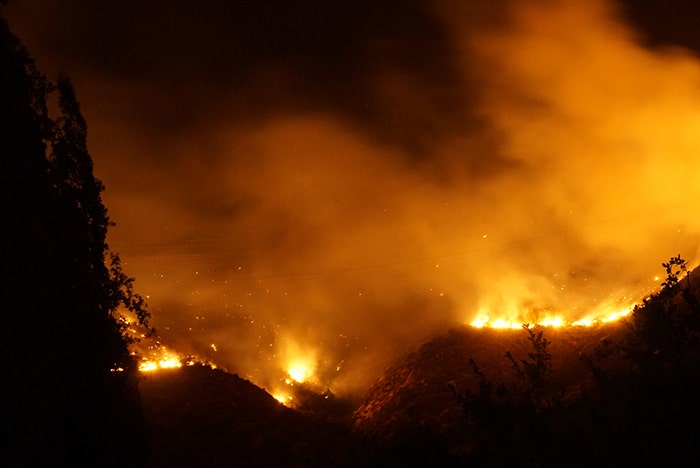During the first week of December, I stood in Nivaldo Morales’s 120-year-old, dry-farmed vineyard in Sauzal, a village in the heart of Chile’s Maule Valley. I marveled at the stumpy heritage vines, mostly País and Carignan, which surrounded me. Six weeks later, this very same area, along with parts of the Itata and Bío Bío valleys, was under siege from the worst wildfires in the country’s history.
Maybe you saw the news reports in late January. Vineyards were caught up in a spreading chain of wildfires that razed large tracts of forest owned by the timber and paper industries. Some rural families, ones that have relied on grapes for generations to eke out an existence, fought the encroaching fires with picks, shovels and bucket brigades. Meanwhile, helicopters hired by the forestry companies flew high overhead to drop water or fire retardants on nearby burning trees.
Some of the reports were downright heartbreaking. One example was a series of teary accounts posted on Facebook by Daniela Lorenzo. Five years ago, she co-founded Santiago’s coolest wine bar, Bocanáriz, but now works with her fiancée, José Luis Bastías González, to make traditional wines in Maule.
As some of the Bastías González family’s oldest vines burned, Lorenzo cried and wondered why there was no help coming from regional authorities or the Chilean government.
According to Derek Mossman Knapp, the Canadian-born owner of Garage Wine Co. and co-founder of the Movement of Independent Vintners (MOVI), it was a clear case of the “little guy getting the short end of the stick.”
Mossman asserted that the damage was the result of a series of issues that came to a head.
When I asked Mossman how could this happen in a country with excellent infrastructure from the Atacama Desert down to Patagonia, he laid much of the blame on the timber and paper industries. Mossman claimed that they’ve overplanted the south-central portion of Chile for decades with fast-growing, highly flammable trees—pine and eucalyptus, in particular.

“They have planted right up to the edge of someone’s property, or to the edge of a small gravel road,” says Mossman. “That’s not an adequate fire break. In some cases, small farmers have had to beg the timber companies to allow them to cut back a few meters of trees, and at their own expense. To me, that’s pure [greed].”
There was also a very dark side to the disaster. Once the fires began under midsummer drought conditions, some winemakers claimed people started additional blazes. While there is no definitive evidence to support these claims, Mossman alleged that some of the fires were started by individuals eager to strike back at the timber industry.
A third factor that some say may have contributed to a sunbaked, fire-prone zone turning into a disaster area may be Chile’s major commercial wineries based further to the north: they were not impacted. Instead the fires struck mostly small farmers unable to fund resources like airplanes, tankers or more firefighters.
Finally, Mossman said that Chilean firefighters are almost all volunteers, especially in rural areas like the Maule Valley. He suggested that Chile needs to review and revamp how it combats wildfires.
What happened in Chile has happened elsewhere. Australia, California and other dry, warm areas have experienced fires that have threatened or destroyed vineyards. But while only about 300 acres of vines (roughly 0.08 percent of Chile’s total vineyard acreage) burned across five wine regions, it’s something Mossman believes should not happen again.
“On the plus side, this provided a geography and history lesson to anyone who thought there are no vines south of the Colchagua Valley,” says Mossman. “At least now people know about Chile’s living patrimony.”
Last Updated: May 4, 2023















